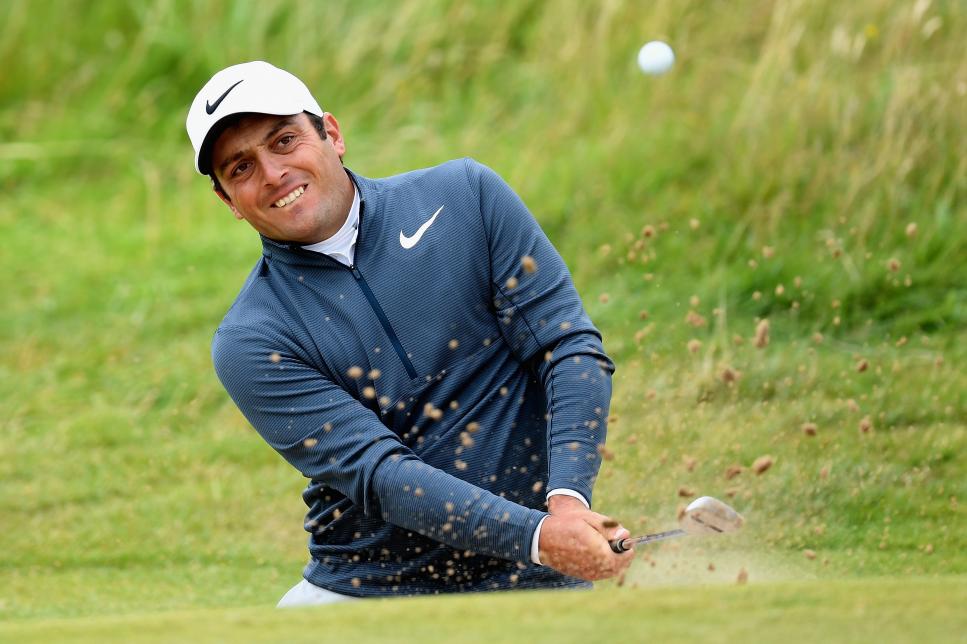To see Francesco Molinari's closing stretch in the Open at Carnoustie, playing alongside Tiger Woods and executing practically every shot flawlessly, one might have been struck by a recurring question: how is this guy not rattled?
The answer could have been found in the Italian's work with performance coach Dave Alred, who has stressed to Molinari the value of practice sessions that most closely resemble the strains of competition. As Alred relayed to the Wall Street Journal's Brian Costa, the objective was to force Molinari to practice as if something was at stake. It isn't enough to mindlessly hit balls at a target, but instead try to execute under a degree of pressure that he'd confront in tournament play. For instance, Costa writes, prior to the start of Molinari's final round, the golfer was required to make eight 5-foot putts from various parts of the green in as few attempts as possible. He did it in nine.
“I don’t see the point of hitting a golf shot in practice without being accountable, given that every shot in competition, you’re accountable in a round,” Alred told Costa. “As a behavior, it doesn’t make sense to me.”
Alred's inventive practice routines borrow somewhat from the teachings of Robert Bjork, an influential psychology professor who has championed something known as "interleaving practice." We've discussed this concept before in exploring the optimal ways to groove a golf swing. If the conventional way to practice was to hit ball after ball with one club until you feel like you've got it down, Bjork's interleaving practice says your brain retains information better when it's forced to adapt from one type of swing to another. So rather than hit a bunch of 7-irons in a row, you'd instead bounce from 7-iron to driver to wedge, and then back to 7-iron. That the way we play golf anyway, and in Bjork's estimation, it's the way your brain re-calibrates every time it makes a new swing that better ingrains patterns.
The added element Alred has introduced with Molinari is pressure. Even when hitting the same shot repeatedly, Molinari was forced to do so with a heightened sense of urgency: the putting drill before his Sunday tee time, for instance, or an earlier exercise in which he had to hit a delicate flop shot within 3 feet. Other tour pros implement these types of drills as well. Phil Mickelson, for instance, has forced himself to sink 100 3-footers in a row before moving on—an ordeal that is less about the mechanics of the putting stroke and more about the quickened heart rate that comes when not wanting to screw up.
The point is, the more discomfort you can create when the stakes are low, the better prepared you'll be when the lights are on for real.


